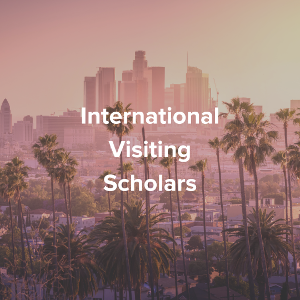Visiting International Scholars
Office of International Education ► Faculty, Staff, & Scholars ► Visiting International Scholars
Visiting International Scholars | Faculty-Led Study Abroad | International Virtual Exchange Learning | Register International Travel | International Partners | International Scholar Seminar Series | H-1B International Employees | International Education Funding Opportunities | Schedule a Study Abroad Presentation
California State University, Dominguez Hills (CSUDH) has been designated by the U.S. Department of State to administer an exchange visitor program for international scholars. The purpose of the visitor program is to provide citizens of other countries with opportunities to participate in educational and cultural programs in the U.S. and return home to share their experiences and encourage Americans to participate in educational and cultural programs in other countries.
View/Download the Application Guide to Visiting Scholars.
Revised December 2022.
| 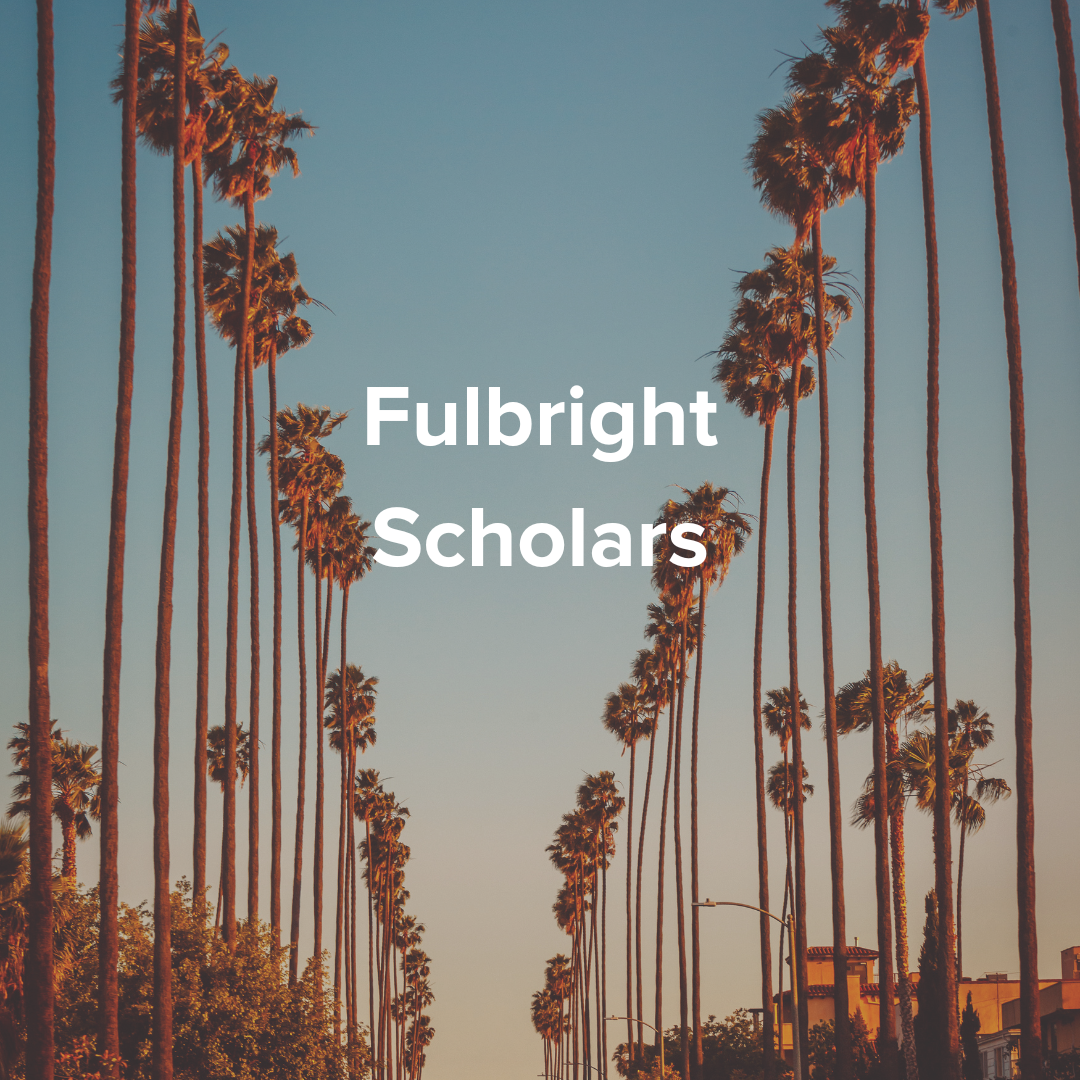 |
Who are visiting scholars? | Who are Fulbright scholars? |
CSUDH will screen and select exchange scholars to participate in their program based on U.S. federal regulations.
Exchange scholars must:
- Participate in a program that furthers research or teaching objectives and has appropriate activity as described under the definitions of the J-1 Exchange Visitor Program for the following categories: Research Scholar, Professor, or College or University Student.
- Have appropriate academic or similar credentials for program activity.
- Have sufficient knowledge of English to participate in their program.
- Have sufficient funding to cover expenses for the duration of their visit.
Exchange scholars must not:
- Be subject to any bars to program participation based on previous time spent in the U.S. in another J-visa status.
- Be a candidate for a tenure-track position.
Current International Scholars
Ji Young Han-Research Scholar
Research: Current trends of the education industry in the U.S.
Dohun Kim-Research Scholar
Research: Difference between contemporary U.S. ceramics and traditional Korean ceramics.
Hye In Yoo-Research Scholar
Research: Analysis of middle and high school curriculum in American schools and the importance of experimentation and practice rather than theory.
Soo Kyung Yoon-Research Scholar
Research: The ways in which STEM education can be enhanced through the incorporation of creative and inventive thinking skills.
Yongshin Yu-Research Scholar
Research: The acquisition of technology in the Open Innovation Method to secure the patent technology of start-ups, and ways to increase business competitiveness by securing patent technology and business models.
Jungkwan Chae-Research Scholar
Research: U.S. educational policies implemented to ease the widening education gap due to COVID-19.
Kyungjae Lee-Research Scholar
Research: Regulatory reform and audit directions following the Fourth Revolution and the role of the U.S. as a leader in the Fourth Industrial Revolution.
Zanele Furusa, Ph.D., Research Scholar
Research: Environmental diplomacy and justice.
Wonhong Lee-Research Scholar
Research: A comparative study on the integrated disaster management system adopted in the United States, and Korea’s disaster management system.
Jung Yun “April” Yoo-Research Scholar
Research: Determining an appropriate way to teach and reach Korean students learning English, so they can confidently communicate in English.
Seung Cheol An-Research Scholar
Research: The U.S. legal system of Artificial Intelligence and the promoting and regulating of Artificial Intelligence technology.
Eun Taek Hwang-Research Scholar
Research: How to utilize intellectual property data to foster non-face-to-face industries in the post-COVID-19 era.
Won Hyuck Jung-Research Scholar
Research: A comparative analysis of the carbon neutrality-related policies in the U.S. and Korea
Maintaining Status
More here soon.
Surname | Given Name (s) | Area of Specialty | Research Focus |
| Ahn | Sun Young | Design and Applied Art and Environmental Science | Eco-friendly packaging and designs for children's products. |
| An | Hyun Chul | Health Science | Hospital administration, the emergency medical system, and alternative medicine in the U.S. |
| An | Seung Cheol | Computer Science | The U.S. legal system of artificial intelligence and the promotion and regulation of artificial intelligence technology. |
| Bae | Hanbyul | Environmental Science | U.S. and Korean environmental industries-waste treatment processes. |
| Baek | Jong Woon | Political Science | Legislative study on the diversification of the composition of local government institutions. |
| Baek | Minjin | Education and Political Science | Higher educational policies in the U.S., particularly the California Master Plan, and the composition of the university system. |
| Cha | Jin Suk | Political Science | Current statistical system in the federal government. Main causes of regional statisticial activations and cooperations between federal and provincial governments. |
| Chang | Soyoung | Psychology | Developing a quality logotherapy counseling program. |
| Chang | Sung Ha | Accounting, Finance | The use of international transaction information integration reports. |
| Cheon | Ho Young | Sociology/Art Therapy | Skills utilized in art therapy programs for children and adolescents that relieve emotional stress. |
| Cho | Bong Hwoan | Information Systems and Operations Managmenet | Organizing a plan to meet the needs for 4.00 industiral revolution by developing a prototype of portable surface treatment plating machine. |
| Choi | Ji Hye | Accounting, Finance | The impact of the change of international financial reporting standards in the management and accounting field at a company. Accounting standards, management behavior, and companies' business environment. |
| Choi | Ji Na | Marketing | U.S. power plant construction industry and how it has affected the marketing strategies of construction. Efficient and effective marketing measures and tools used by U.S. plant construction companies in both the domestic and international markets. |
| Choi | Jung Ho | Accounting | A comparison of the budget between Korea and the U.S. A theoretical study of Citizen Participation Budget and American Citizen Participation Budget research. |
| Hong | Changgi | Accounting, Finance | Smooth processes for direct banking systems. |
| Hong | Ji Young | Clincial Science | Anti-cancer drug resistance and strategy to overcome anti-cancer drug resistance using natural products. |
| Jang | Doon Sook | Computer Science | Development of high-quality software at a low cost on a planned schedule. An analysis of the history of software development, methodology, and distinctiveness of the application of software engineering and key factors that improve process and product quality in development culture. |
| Jung | Suhee | Art and Design, Education | The differences in art education in the U.S. and Korea and the changing flow of art education in line with the upcoming industry. |
| Kang | Hwa Young | Teaching English as Second Language | Exploring diverse English learning methods utilized in the U.S. with the intention of developing a more efficient system, and different methods in which English can be taught to Korean students and adults. |
| Kang | Sook Young | International Economics, International Business | Building, developing, and managing relationships between customers and suppliers in the U.S. |
| Kang | Yun Ji | Management/Human Resources | Analyzing home rental systems, marketing and residential environmental design properties to gain insight into an efficient system that will increase U.S. foreign populations in Korea. |
| Kim | Jun Hee | Marketing | Leisure industry design trend research and branding strategy. |
| Kim | Boram | Health Science | Nutrient deficiency of our body due to various medicines that treat diseases. |
| Kim | Daejung | Finance | The stock return co-movement between Korean and U.S. stock markets and the existence of a spillover effect for the last two years. |
| Kim | Donghyuk | Urban Regeneration | The reply model of public-private cooperation in urban rehabilitation. |
| Kim | Eonhee | Public Administration | How local governments develop their regions and create policies to deal with community issues. |
| Kim | Hyo Eun | Medical Anthropology | Pain experience and treatment of choice between people of color (Asian, African-American, and Hispanic). |
| Kim | Jae Hoon | Business Administration, Management and Marketing | The ecosystem and the latest trend of start-ups at California's Silicon Beach to create a model for new entrepreneurs to benchmark from successful businesses in the U.S. |
| Kim | Jaehyung | Management and Human Resources | The efficiency of Corporate Human Resource Management in the digital era and the applicability of digitalized U.S. HR management to Korean companies. |
| Kim | Jinhee | Information Systems and Public Administration | Analysis of the state of digital innovation in the public sector in the U.S. and major industrialized countries, to prepare a digital innovation plan suited to the institutional and cultural conditions of our country in response to the recent changes in the environment, such as the development of intelligence information technology. |
| Kim | Kihoon | Public Policy /Political Science | Relevant statistical indicators used for analysis and prediction of income-related policies. |
| Kim | Kwanho | Environmental Science | Establishing a development of a sustainable North Korean forest restoration model using international organizations based on the analysis of international trends. Develop North Korean forest restoration strategies that prioritize recovery strategies based on the public opinion of the international community. |
| Kim | Mi Jorng | Information Systems and Management | Information Strategic Planning (ISP) methodology, particularly how the first ISP methodology made in the U.S. was introduced and used in Korea, and the difference between U.S. methodology and Korean methodology. |
| Kim | Min Kyoung | Management/Marketing | Psychological behavior of airline passengers related to customer services to create a responsive manual based upon behavior. |
| Kim | Minkyung | Political Science | The urban regeneration plan and design in the U.S. |
| Kim | Oh Young | Accounting and Finance | Systematic operations of International Compliance Assurance Programme (ICAP)and the status of domestic and foreign ICAP systems and policies related to training tasks. |
| Kim | Sae Ro Mi | Public Relations/Marketing | The importance of public relations marketing and how corporate messages should be tailored to effectively promote products and companies in overseas markets. |
| Kim | Seo Young | Clinical Science | In-depth pediatric infection control and infections in children and the corresponding response procedures of health care systems in South Korea and Los Angeles, California. |
| Kim | Suhyeon | Art/Art Studio | Abstract and expressionistic art from the U.S., particularly involving the study of works by Mark Rothko, Barnett Newman, and Clifford Still. |
| Kim | Sungkwon | Management, Marketing, and Hospitality | The resort industry of Korea and of the U.S. How to revitalize and increase profitability of the resort industry to secure a competitive advantage and consistent growth of a company. |
| Kim | Tae Hyun | Law and Business Administration | The legal system between the U.S. and Korea and the domestic legal system and legal information system operation. |
| Kim | Yoon Jee | Management, Marketing, and Law | Various laws protecting the privacy of consumers in the U.S., such as CCPA, COPPA, or CLOUD. |
| Ko | Hong Ki | Clincial Science | Creation of a detailed diagnosing algorithm and development of an effective communication system where parents can easily access, understand, and fully utilize to assist in the diagnosis and treatment of their children with common illnesses. |
| Koh | Seunghyon | Accounting/Finance/Marketing | Taxpayer-friendly tax administration construction through big data analysis. |
| Koo | Seayoun | Management and Marketing | The strengths and weaknesses of the U.S. health insurance system related to medicine. |
| Lee | Ae Hwa | Management/ Marketing | An analysis of the collection of urban regeneration success cases and the tourism promotion in the U.S. compared to Korea's. |
| Lee | Hanwoong | Health Science | An effective way to communicate with foreign patients and study marketing hospitals internationally. |
| Lee | Hye Min | Poltical Science | Social integration policies for refugees and immigrants in the U.S. |
| Lee | Jaeyoung | Psychology | The prevalence of pain and depression in immigrants. |
| Lee | Jeong Hyun | Education | The U.S. public school curriculum and methods that the U.S. school system uses to foster students’ interest in reading. |
| Lee | Seunghyun | Political Scicence | Technology used in urban regeneration and urban regeneration engineering. |
| Lim | Taehyung | Accounting, Finance | The auditing processes in the U.S. compared to those of the Board of Audit and Inspection of Korea (BAI), with the expectation of developing a system that makes recommendations to improve the accounting and management practices of individuals or companies. |
| Park | Ju Hee | Art and Design /Applied Arts | Explore and understand the concept of aesthetics and art in the modern era. |
| Park | June Soo | Public Administration & Public Policy | The methods used by the U.S. government to promote community participation in the legal system. |
| Park | Minji | Marketing | Mobile commerce in the fashion industry, specifically the process of consumers’ purchasing decisions and development of a “taxonomy” about promotion strategies of mobile commerce related to fashion. |
| Park | Ryoon Hong | Management | U.S. and Korean enterpreneurial ecosystems and environment with regards to sustainability and growth of startups. |
| Park | Si Min | Clinical Science | Medical devices and individual patient healing devices. |
| Park | Sookyung | Clincial Science | The accuracy and utilization of HPV testing in the U.S. |
| Park | Yun Ju | Accounting, Finance | Alternative investment market trends and characteristics. Alternative invetment exposure to reflect proper illiquidity premium by investor type. |
| Ramirez Urquidy | Martin Arturo | Accounting and Finance | A collaborative research project entitled "The Impact of Institutional Environment on Different Entrepreneurial Outcomes at the State Level in Mexico.” |
| Rho | Hyunsook | Human Resource Management | Social background and operation cases of the U.S. government’s work/family reconciliation policies and various welfare systems. |
| Seo | Ye Young | Clinical Science | Investigating the relationship between myocardial sympathetic degeneration and nigrostriatal impairment in patients affected by Parkinson’s disease (PD). |
| Shim | Inbo | Music and Music Performance | The analysis of factors such as age, income, gender, ethnic background, and location and its effect on children’s performance as they take part in the orchestra. |
| Shin | Sanghee | Human Resource Management | Human resource management system and the relationship with U.S. organizational culture and human resource management and the relationship between the efficiency of the organization and the efficiency through field visits. |
| Shin | Surin | Education: Counseling and Clinical Pyschology | Clinical psychology and school counseling, particularly in public and private high schools and colleges in the U.S. |
| Son | Junghwa | Teacher Education | The educational system in U.S. elementary schools in relation to STEM fields. |
| Song | Jeongeun | Management and Marketing | International business and trade methods in the U.S. and top performers of online sales and B2B. |
| Tak | Hyochul | Biological Sciences | Treating the spine to develop a practical percutaneous orthopedic lumbar surgery. |
| Woo | Jungho | System Engineering | Designing an optimized UAV for future ROK forces. |
| Woo | Kyeongjin "Jennie" | Biology | Researching gene therapy of incurable retinal diseases and molecular advances that will influence aspects of diagnosis, prognosis, and therapy in clinical ophthalmology. |
| Yang | Byung Hyun | Urban Regeneration and Public Policies | Urban regeneration in the U.S. and systems utilized to sustain urban regeneration and participation of companies. |
| Yang | Heui Kou | Information System and Operation Management | Automation of the claim adjusting process and how insurance adjusting will be affected by the incoming Artificial Intelligence (AI) or the fourth industrial revolution. |
| Yang | Mun Sul | Health Science | A study of efficient resource allocations and hospital operation form utilizing healthcare big data. |
| Yoon | Eun Sook | Management | The service industry and the behavior of customers in various service environments based on different nationalities and races. |
| Yoon | Joungoh | Accounting, Finance, Taxes, and Accounting | U.S. accounting policies and tax regulations. |
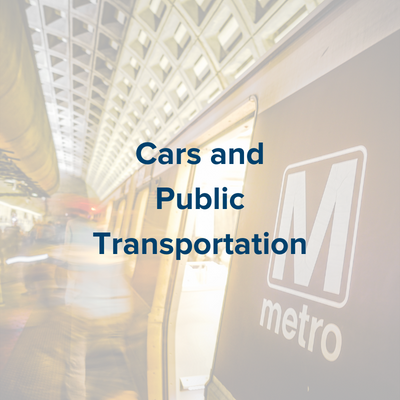 | 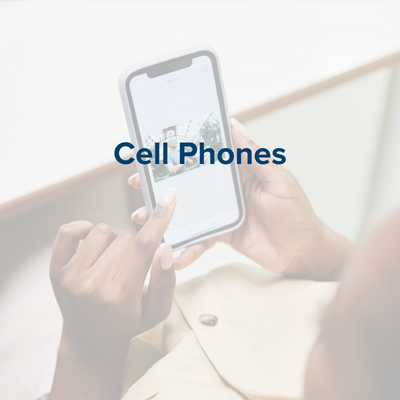 | 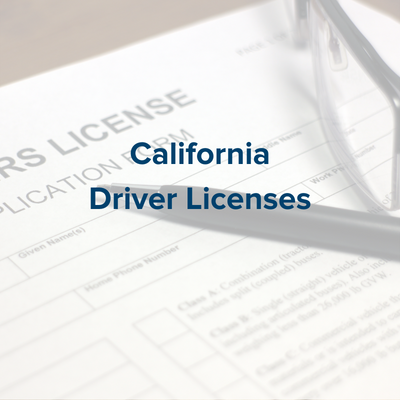 |  | 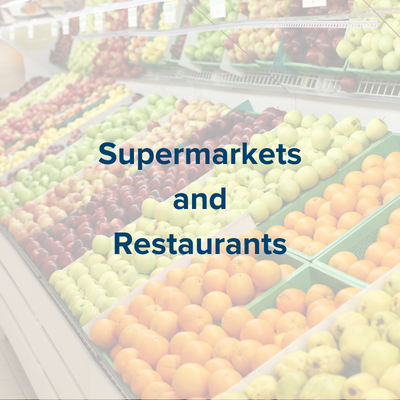 | 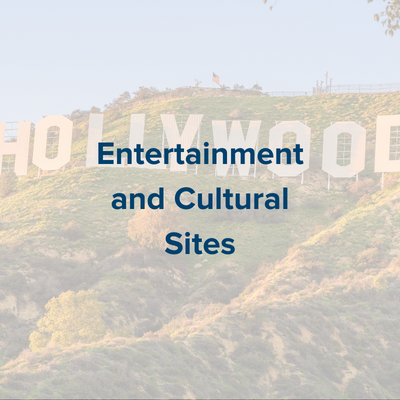 |
Cars and Public Transportation
ZipCar
CSUDH has partnered with Zipcar to bring self-service, on-demand car sharing to campus. To enjoy this on-demand service, you’ll need to do the following:
- Have a valid driver’s license (see below).
- Apply online to join ZipCar.
- Book a car on Zipcar’s smartphone app.
- Return the car when you’re done, in the same location you picked it up.
As a member of ZipCar you get:
- 24/7 access to cars.
- Discounted hourly rates for faculty, staff, and students age 18 and older.
- Gas, insurance, and maintenance included in the price.
Join at zipcar.com/universities/csudh.
Parking Permits for Driving
All vehicles, including motorcycles and scooters parked on a campus, are required to have a valid parking permit displayed. You can buy permits at the cashier's office or from the parking permit dispensing machines.
Motorcycles and scooters have special areas for parking: the southwest corner of Lot 2, southeast corner of Lot 3, northwest corner of Lot 4, and northeast corner of Lot 6. A separate parking permit is required if you drive a motorcycle and park it on campus. Motorcyle permits can only be bought at the cashier's office.
Daily parking permits must be displayed on the driver's side, on the dashboard of the vehicle in plain sight. Daily parking permits are purchased from the parking permit dispensing machines. Cash, credit cards, and debit cards are accepted.
Parking permits are enforced seven days a week, 24 hours a day. For further information, please contact the Parking Office at (310) 243-3725. For more information regarding parking fees, please visit csudh.edu/dhpd/departments/parking/.
Public Transportation
Carson Circuit, Torrance Transit buses, Metro, and light rail provide direct service to most parts of the campus. If you are commuting to CSUDH from outside Los Angeles, you can use Metrolink for quick and convenient connections.
Use Google Maps or download Transit, the official LA County smartphone app for public transportation.
Here are the following local transportation options:
- LA Metro (routes 130, 53, 445, 446, 205 serve the campus)
- Carson Circuit
- Torrance Transit (route #6 serves the campus)
- Long Beach Transit, via Metro Blueline to the campus
Full-time CSUDH students can buy discounted TAP cards to use on buses or trains in the LA Metro system. For more information, visit csudh.edu/rideshare/student-info/.
The LA Metro system is comprised of multiple lines (Metro Maps):
- The Metro A Blue Line runs north and south between Long Beach and Los Angeles.
- The Metro C Green Line crosses the Blue Line, running east and west between Norwalk and Redondo Beach, curving south near the Los Angeles International Airport (LAX).
- The Metro D Purple Line subway shares six stations with the Red Line Downtown and continues to the Mid-Wilshire area.
- The Metro B Red Line meets the Blue Line in LA and provides service through Downtown, between Union Station, Hollywood and the San Fernando Valley, where it meets the Metro Orange Line.
- The Metro L Gold Line connects with the Red Line at Union Station, and runs northeast to Pasadena. Free cultural and public transportation Tour Guide to the greater LA area.
- The Metro E Expo Line runs from Santa Monica to downtown Los Angeles, passing through the Exposition Park area.
- The Metro K Line serves the Crenshaw District, Inglewood, Westchester, and surrounding areas.
Metrolink Trains is another company that offers discounted weekend tickets and serves Los Angeles, Orange, Riverside, San Bernardino, Ventura and North San Diego counties.
Toro Express Shuttle
CSUDH offers Toro Express, a free shuttle bus for students. Toro Express runs Monday through Friday 8:00 a.m. to 6:00 p.m. Schedules and routes are available on the Toro Express web page.
Cell Phones
Local Cell Phone Providers
- Total Wireless by Verizon (multiple locations in Carson).
- AT&T (15 stores in/near Carson)
- T-Mobile (25 stores in/near Carson)
- Tracfone
- Simple Mobile (multiple locations in Carson)
- Straight Talk
- Mint Mobile
- Metro by T-Mobile (multiple locations in Carson)
There are numerous options when seeking a U.S. cell phone service. Many cell phone companies provide a variety of contract, pre-paid, and no-contract plans. As a standard rule, cell phone service providers require a U.S. credit card to begin service. However, many cell phone companies will initiate service with a cash deposit. A U.S. Social Security Number (SSN) is not necessary to open an account.
Shopping around and choosing the most suitable phone plan option is always a good idea. Although our office doesn’t provide any specific recommendations, the information below will help you search for a U.S. cell phone. Make sure you know the answers to these questions:
- Are there plans available specifically for international students or scholars?
- What are the differences between contract, pre-paid, and other plans?
- Does the company require a contract for a fixed period? If a contract is required, how long is the contract period, and are there penalties for early termination?
- How much calling, text messages (SMS), and cellular data are included in the plan? Note that U.S. plans usually charge for both incoming and outgoing messages/calls.
- Can I use my own phone? See below.
- How much would it be to buy a new phone with the plans? Do I have to pay for a new phone upfront, or is there a monthly payment option?
- What coverage does the cell phone company provide? Different service providers offer varying coverage.
Finally, you aren't always required to buy a new phone, as you may be able to use your current phone and get a new service plan. Ask the cell phone company for more information.
Using Your International Phone in the U.S. with a U.S.-compatible SIM Card
You may be able to use your home country's cell phone in the U.S. However, check with your carrier to confirm if this is possible. In many cases, there are better long-term options than this, since you may need to pay expensive roaming charges. However, if your cell phone is unlocked, you may be able to use your phone in the U.S. with a SIM card compatible with use in the U.S.
- You should be aware of your phone's network technology (e.g., GSM, CDMA, LTE) and purchase a SIM card compatible with your phone type. GSM is the most common type of network worldwide, and all LTE networks use GSM.
- You can buy SIM cards from major U.S. cell phone providers (including Verizon, AT&T, Spring, and T-Mobile) and many smaller companies such as U.S. Mobile, Mint Mobile, and others.
Money and Banking
When you arrive in the U.S., you should keep your money in a secure location, such as a safe deposit box, if staying at a hotel. Be sure to open a bank account as soon as possible. Americans use a combination of online banking, check writing, and debit or credit cards to make purchases and pay bills.
When choosing which bank is best for you, here are a few best practices:
- Explore your options.
- Ask questions, such as:
- Do you have a minimum required amount to open an account or a minimum daily balance? (we recommend avoiding this)
- Do you have a maintenance fee? (we recommend avoiding this)
- What additional fees do you charge? Are there overdraft fees? ATM fees?
- What do I need to know about online banking?
- What do I need to know about closing my account before I leave?
- Bring the right documents. This may include:
- Your passport with your J-1 Visa
- Your DS-2019 Form
- Your I-94
- Your CSUDH student or scholar ID card
- Check your bank’s requirements online before going in person to open your account.
California Driver Licenses and IDs
If you plan to drive in California or purchase a vehicle, getting a California Driver's License is highly recommended.
10 Steps to Get a California Driver’s License
- You will need to complete the check-in process with our office as we will activate your SEVIS record.
- Wait at least ten (10) calendar days after your SEVIS record has been activated before applying.
- Review the latest California Driver Handbook on the Department of Motor Vehicles (DMV) website, DMV.ca.gov.
- Review sample driving knowledge exams on the DMV website. You may also be required to take a driving test.
- Schedule an appointment at a local DMV office.
- Bring the following documents to your appointment:
- Form I-20 for F-1; or DS-2019 for J-1; or Notice of Action (I-797 Approved Petition) for H-1B
- Your passport
- Visa in your passport (Canadian citizens do not have a visa in their passport)
- I-94 document (print it at https://i94.cbp.dhs.gov/I94/)
- Two documents that prove your residency in California
- Pay the nonrefundable application fee.
- Pass a vision exam.
- Pass a computer-based knowledge test (you have three chances to pass).
- Pass a behind-the-wheel driving test. You must schedule an appointment for the driving test.
California State Identification Card
If you are not planning to drive, you may choose to apply for a California Identification Card, which will include your photo and date of birth. This card can be used for identification purposes. This ID card is accepted at banks, stores, and other businesses where name and age identification is required. You do not need to pass a driving test, as you will for a driver's license, to receive this identification card, but it holds equal value. You can get a California ID from the California DMV, DMV.ca.gov.
8 Steps to Get a California State Identification Card
- You will need to complete the check-in process with our office as we will activate your SEVIS record.
- Wait at least ten (10) calendar days after your SEVIS record has been activated before applying.
- Complete an ID application.
- Schedule an appointment at a local DMV office.
- Visit the DMV office and provide the following:
- Proof of identity and California residency. You will need to provide two documents that verify your local Californian address. Both documents must display the same address.
- Pay the nonrefundable application fee.
- Have your fingerprints scanned.
- Have your photo taken.
DMV Offices Near CSUDH
Compton DMV
Address: 2111 S Santa Fe Ave, Compton, CA 90221
Drive Time: 10-15 minutes from CSUDH
Phone: 1-800-777-0133
Hours:
- Monday, Tuesday, Thursday, and Friday 8:00 a.m. to 5:00 p.m.
- Wednesday 9:00 a.m. to 5:00 p.m.
- Saturday and Sunday closed
Wait Time: 3-54 minutes (busiest on Mondays)
Torrance DMV
Address: 1785 W. 220t Street, Torrance, CA 90501
Drive Time: 15-20 minutes from CSUDH
Phone: 1-800-777-0133
Hours:
- Monday, Tuesday, Thursday, and Friday 8:00 a.m. to 5:00 p.m.
- Wednesday 9:00 a.m. to 5:00 p.m.
- Saturday and Sunday closed
Wait Time: 1-37 minutes (busiest on Mondays)
Long Beach DMV
Address: 3700 East Willow Street, Long Beach, CA 90815
Drive Time: 20-30 minutes from CSUDH
Phone: 1-800-777-0133
Hours:
- Monday, Tuesday, Thursday, and Friday 8:00 a.m. to 5:00 p.m.
- Wednesday 9:00 a.m. to 5:00 p.m.
- Saturday and Sunday closed
Wait Time: 2-37 minutes (busiest on Mondays)
DMV field offices accept cash, checks, credit cards, debit cards, digital wallets, and money orders.
Supermarkets and Restaurants Near CSUDH
Supermarkets
There are many supermarkets near CSUDH, including these stores:
- Target Grocery, a budget supermarket, a 8-minute drive, 20-minute commute, or 48-minute walk from campus.
- Address: 20700 Avalon Blvd Suite 700, Carson, CA 90746
- Hours: 7:00 a.m. to 12:00 a.m. midnight every day
- Walmart Neighborhood Market, a budget supermarket, a 6-minute drive, 20-minute commute, or 45-minute walk from campus.
- Address: 20226 Avalon Blvd, Carson, CA 90746
- Hours: 6:00 a.m. to 11:00 p.m. every day
- ALDI, a budget European supermarket, a 6-minute drive, 20-minute commute, or 45-minute walk from campus.
- Address: 20700 S Avalon Blvd Suite 103, Carson, CA 90746
- Hours: 9:00 a.m. to 9:00 p.m. every day
- Tokyo Central, a Japanese supermarket, a 12-minute drive or 30-minute commute from campus.
- Address: 1740 Artesia Blvd, Gardena, CA 90248
- Hours: 8:00 a.m. to 9:00 p.m. every day
- Makkah Market and Tandoori Grill, an Indian, Pakistani, and Mediterranean supermarket and restaurant, a 16-minute drive or 1-hour commute from campus.
- Address: 22846 S Western Ave, Torrance, CA 90501
- Hours: 9:00 a.m. to 7:00 p.m. most days
Restaurants
There are multiple dining places on and off campus. On campus, there are several dining choices: https://csudh.campusdish.com/LocationsAndMenus.
There are also nearby restaurants off campus (Yelp.com).
Entertainment and Cultural Sites
CSUDH is centrally-located in Los Angeles County, within a 30-minute drive of the beaches, downtown Los Angeles, Hollywood, Disneyland, and more. The mountains are up to a 1.5-hour drive away, and Joshua Tree National Park is a 2-hour drive.
For a list of things to do in LA, check out these websites:
- "Things to Do in Los Angeles" (TripAdvisor)
- "The 49 Best Things to Do in Los Angeles" (TimeOut)
Contact
For more information regarding inviting international visitors to CSUDH, please contact Ms. Ormond Rucker, Visa and Immigration International Coordinator, at orucker@csudh.edu or +1 310-243-3734.
